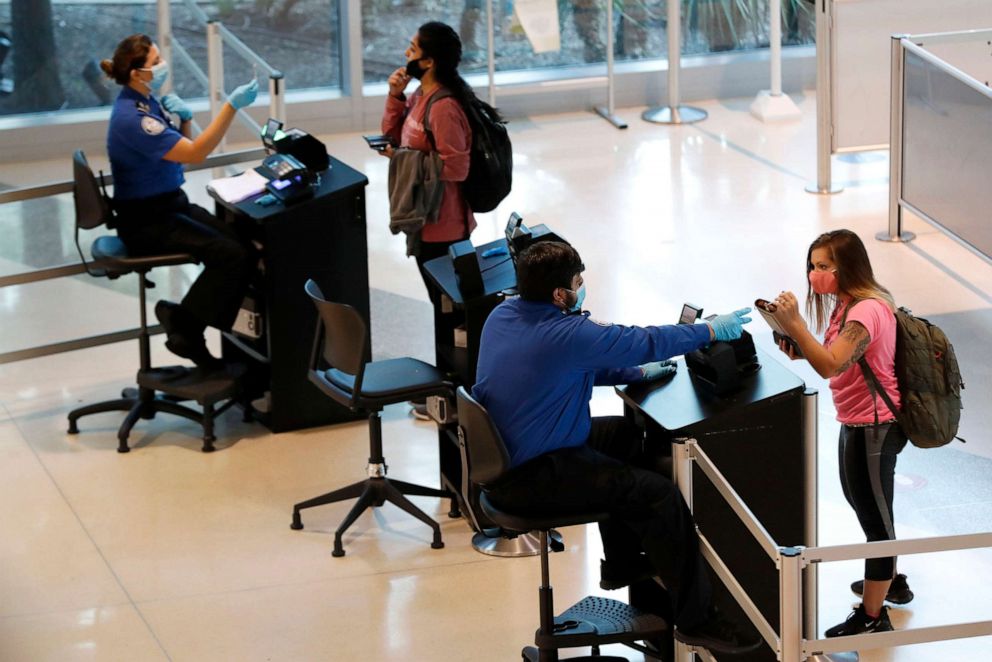TSA reports busiest day for air travel since March
The agency screened 877,698 travelers on Thursday, the highest since March 17.
The Transportation Security Administration (TSA) reported its busiest day on Thursday since the demand for air travel plummeted in mid-March as travelers take advantage of the long holiday weekend that traditionally marks the end of the summer travel season.
TSA screened 877,698 travelers on Thursday, the highest number since March 17, and the agency expects Friday will be even busier with the number of travelers likely topping 900,000.
"For travelers who have not flown since the beginning of the pandemic, the TSA checkpoint experience will be noticeably different as compared to Labor Day last year," TSA Administrator David Pekoske said in a press release. "Passengers also play an important role in helping us ensure they safely and efficiently get through security screening at our airports while wearing masks and respecting social distancing."
U.S. airlines expected a slight uptick in passengers over Labor Day similar to what they reported around Memorial Day and the Fourth of July, but the new TSA pandemic record is still down over 50% compared with the same day last year.

The lion’s share of Labor Day travel bookings have been reservations to Florida, according to travel itinerary app TripIt.
"Florida is this year’s hot spot," TripIt said in its findings, noting that bookings to the state have jumped 200% compared with Labor Day weekend last year.
Experts are concerned the uptick in travel -- especially in states that are hotspots for coronavirus -- might translate to a surge in COVID-19 cases.
"It’s very predictable," ABC News contributor Dr. John Brownstein, chief innovation officer for the Boston Children’s Hospital and a professor of epidemiology at Harvard Medical School, said. "Major holidays, where people are moving — increases in mobility lead to transmission, and you see cases start to surge two weeks later."
What to know about coronavirus:
- How it started and how to protect yourself: coronavirus explained
- What to do if you have symptoms: coronavirus symptoms
- Tracking the spread in the US and Worldwide: coronavirus map




